On a recent trip to Amsterdam with Sheffield School of Architecture students, we visited the relatively newly completed Ijburg series of new islands built to extend the city and its housing stock. There were parts of the islands in particular where the quality and range of domestic architecture was amazing. We chatted to a resident who let us into their house. They had bought the plot from a developer and had been given some simple rules about building line, height and materials. They employed an Architect and built their very individual, but very contextual home. This got me thinking about our development and planning systems at home and about how restrictive they are, often delivering bland homogeneity coupled with poor design quality and aspiration.
This post is by no means out to provide an answer to the problems I’ve highlighted but is just to investigate the development of Ijburg in a little more detail; to show some photos of some beautiful residential development and to add some comments of my own.
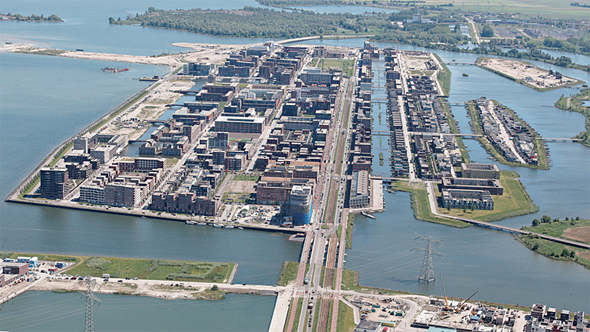
Aerial view of Ijburg (http://amsterdamsmartcity.com/projects/detail/label/IJburg)
I think being a series of completely new islands Ijburg presented a challenge, but also an opportunity that will unlikely ever exist in our densely populated island. However, the way it was approached is very different to how I would expect anything like this in the UK. Firstly, “IJburg involved an integrated planning process involving a larger number of public agencies in the design and planning process. This enabled the plan to be produced by a wide range of disciplines right from the start, and reduced the risk of isolated teams working alone.” (http://www.scotland.gov.uk/Publications/2010/12/31110906/16)
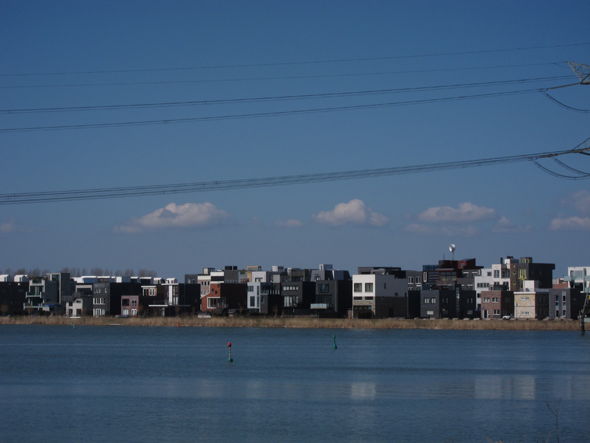
An island view
The masterplan that was developed allowed for a clear urban hierarchy with excellent infrastructure and a pattern of streets that referenced existing successful areas of the city. The proposal gave excellent housing densities but also allowed for a diverse selection of housing typologies, ownership and procurement models. “The urban design scheme for these islands (2000) is based on a grid of rectangular blocks, rectilinear streets, green strips and waterways.” “based on the ‘collage city’ concept, which means that each of the eight neighbourhoods has been given its own individual character as far as possible.” (http://www.ijburg.nl/english)
Design quality was very highly regarded and supported by a structure of design led professionals:
“Most of the blocks are being fleshed out by a team of architects, with one architect in each team acting as coordinating architect. A supervisory and quality control team, headed by the former government architect Kees Rijnboutt, has overseen the work of the coordinating architects.” (http://www.ijburg.nl/english)
“To ensure design quality and integration, the city council appointed a ‘quality team’. Each architect/designer working on a housing block/parcel was placed under the supervision of a block principal, called a ‘coach’, who acted as a coordinating architect ensuring that the building and block designs of individual designers combined coherently, and that potential conflicts between different uses were also considered… Developers soon learnt that the best way of getting through this process was to employ a good architect: “Nobody can simply choose the path of least resistance and trot out a design on autopilot.” (Claus, F; van Dongen, F; and Schaap, T (2001), IJburg, Haveneiland and Rieteilanden, 010 Publishers, Rotterdam)” (http://www.scotland.gov.uk/Publications/2010/12/31110906/16)
Most of the denser areas of the island where apartment buildings are the dominant building type have this successful mix of Architectural individuality within an overall feeling of a cohesive neighbourhood.

An Ijburg side street; a unique and densely urban neighbourhood
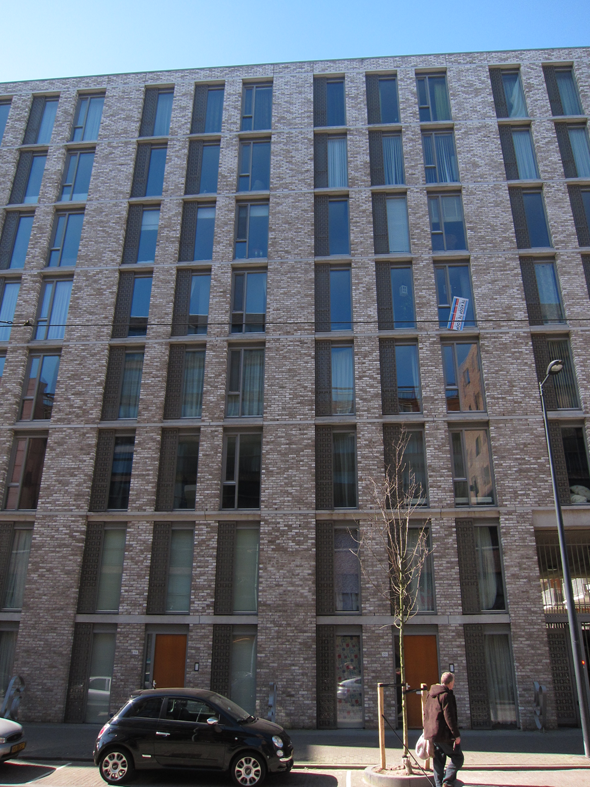
High quality and very controlled architecture
“It also demonstrates how careful planning and a robust delivery mechanism can allow the build-out of an area with many different designers and development models, producing a rich variety of built environment than is normally expected in a newly-created neighbourhood. It avoids the temptation to be outlandish in layouts or design of the place. The street layouts are conventional and within this framework there is space for some quite extraordinary architecture, but it is contained within a framework of well defined streets and blocks that allows architectural variety without distracting from the place.” (http://www.scotland.gov.uk/Publications/2010/12/31110906/16)
It’s really clear to me that the important thing here in terms of planning has been the creation of a framework and structure within which more individual design takes place. The planning system has provided a land-use, massing and infrastructure framework within which high quality Architecture can be created.
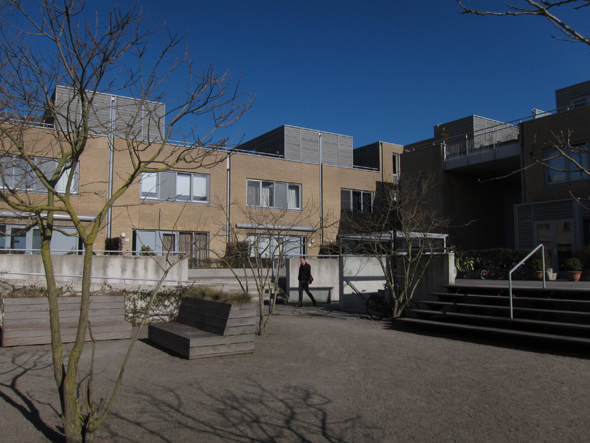
Some highly successful courtyard houses developed by a housing co-operative
Elsewhere on the island, as was alluded to by the resident we spoke with, “‘private plots’ are being built on by private individuals who are working with an architect of their choice, without a supervisory architect and without any aesthetic control by the municipal inspectorate… 2 this has resulted in a high degree of architectural variation. The design of the public space will provide the necessary cohesion.” (http://www.ijburg.nl/english)
This has allowed a huge variety of individual dwellings to be created that still fit well within their urban context and creates a rich tapestry of material and design that is tied together with a high quality public realm. Rather than creating a collection of disparate, clashing buildings, as the planners in the UK might fear, it creates a real sense of place and of ownership amongst the residents.
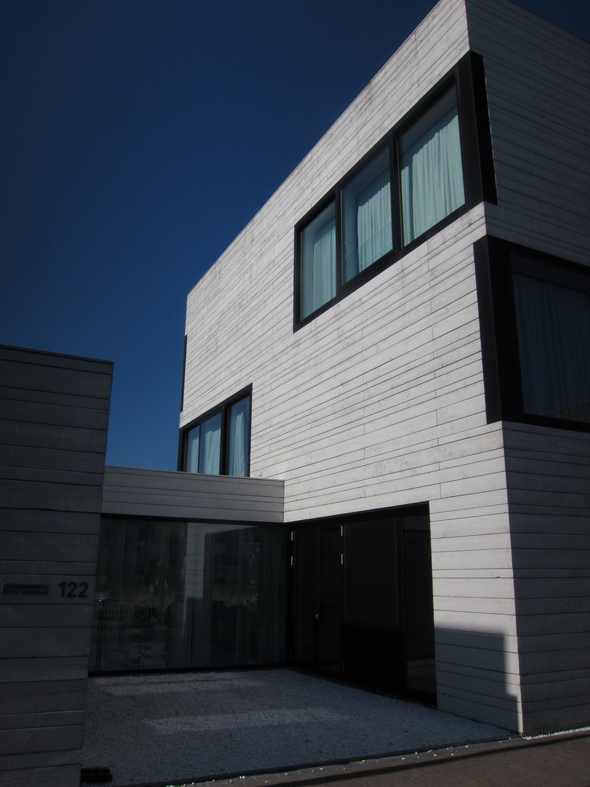
A series of beautifully designed and crafted individual homes..
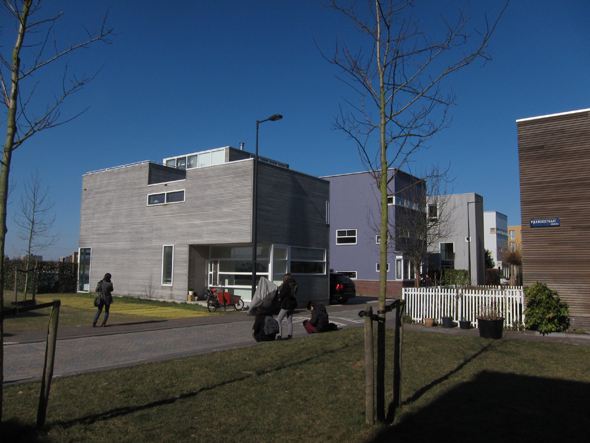
..sit side by side in well designed streets that create a cohesive neighbourhood..
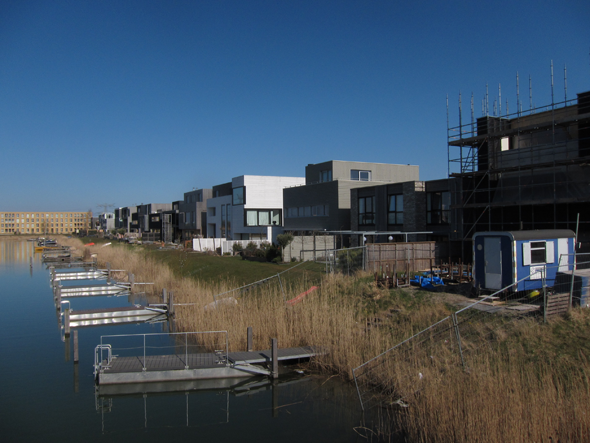
..that relates well to the surrounding landscape and water.
My take from this is that planning was, and should be, about a regulatory framework that deals with land use, urban scale, and city (or rural) space planning. It shouldn’t be about Architectural detail; which primarily, in the mind of most Architects and building designers, is exactly what it now focuses on. Whether it’s a new urban block, a new single family dwelling or a house extension it’s acceptability under planning should not be decided in terms of Architectural detail by planners with little design skill or training. This is not to say that design quality and the control of which is not important. It’s incredibly important, but planning authorities should take advice from existing highly skilled, peer led, design review panels, or encourage the creation of new panels where they currently don’t exist. We should be making best use of appropriate skills rather than mixing roles and perpetuating the current minefield that is planning and development control.
There’s also a whole other debate that this raises about developers, plots available for self-build, procurement, volume house builders and trends such as co-housing. I think I might leave those for another time.

… children playing outside is always a good sign of a successful neighbourhood. Thanks to Stef for the photo!